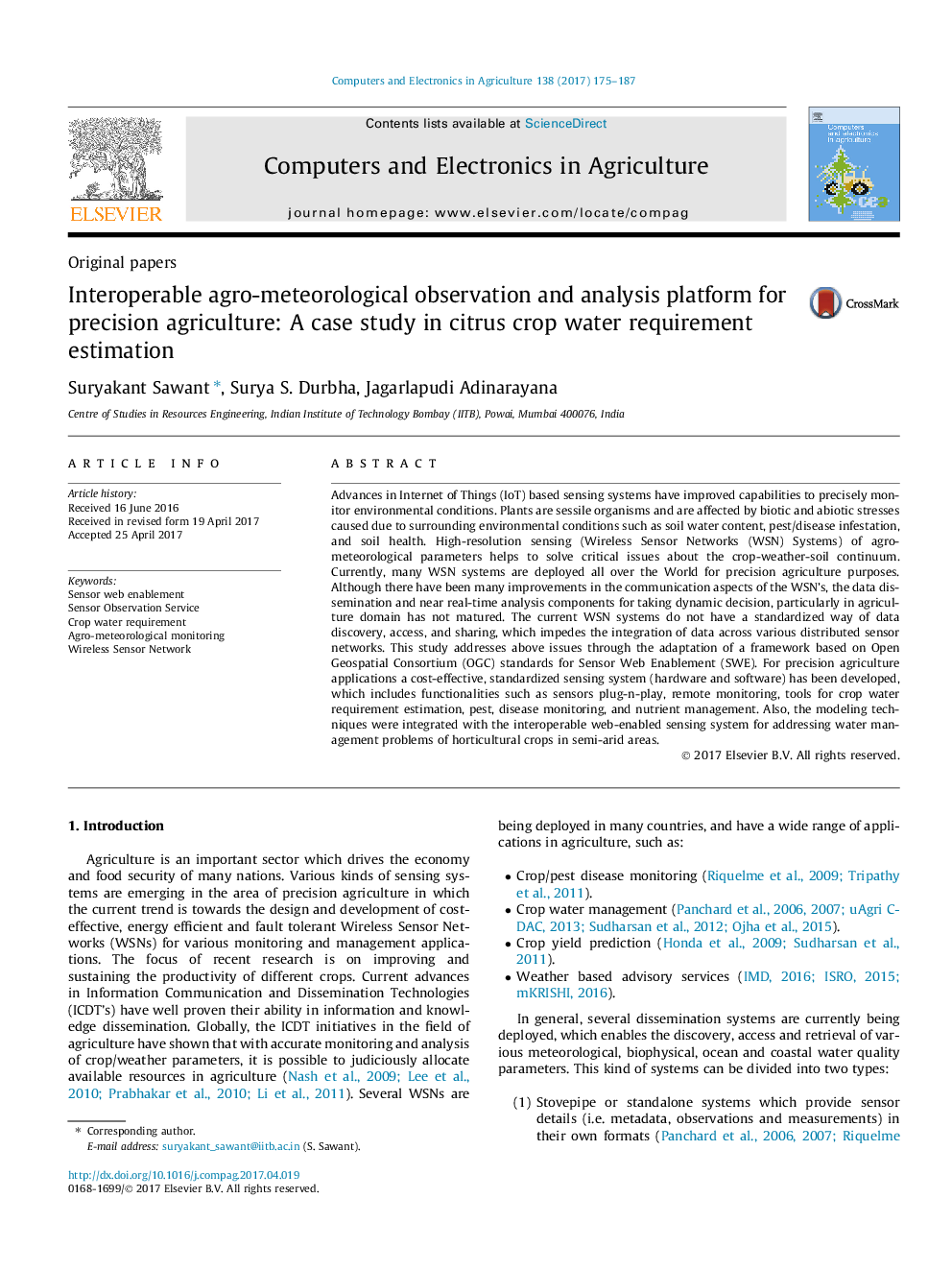| Article ID | Journal | Published Year | Pages | File Type |
|---|---|---|---|---|
| 4759134 | Computers and Electronics in Agriculture | 2017 | 13 Pages |
Abstract
Advances in Internet of Things (IoT) based sensing systems have improved capabilities to precisely monitor environmental conditions. Plants are sessile organisms and are affected by biotic and abiotic stresses caused due to surrounding environmental conditions such as soil water content, pest/disease infestation, and soil health. High-resolution sensing (Wireless Sensor Networks (WSN) Systems) of agro-meteorological parameters helps to solve critical issues about the crop-weather-soil continuum. Currently, many WSN systems are deployed all over the World for precision agriculture purposes. Although there have been many improvements in the communication aspects of the WSN's, the data dissemination and near real-time analysis components for taking dynamic decision, particularly in agriculture domain has not matured. The current WSN systems do not have a standardized way of data discovery, access, and sharing, which impedes the integration of data across various distributed sensor networks. This study addresses above issues through the adaptation of a framework based on Open Geospatial Consortium (OGC) standards for Sensor Web Enablement (SWE). For precision agriculture applications a cost-effective, standardized sensing system (hardware and software) has been developed, which includes functionalities such as sensors plug-n-play, remote monitoring, tools for crop water requirement estimation, pest, disease monitoring, and nutrient management. Also, the modeling techniques were integrated with the interoperable web-enabled sensing system for addressing water management problems of horticultural crops in semi-arid areas.
Related Topics
Physical Sciences and Engineering
Computer Science
Computer Science Applications
Authors
Suryakant Sawant, Surya S. Durbha, Jagarlapudi Adinarayana,
